Golestan Palace holds a prestigious status as one of Tehran and Iran’s most significant cultural treasures. In 2013, it achieved global recognition by being registered on the world stage. This illustrious acknowledgment underscores the paramount importance and historical value of Golestan Palace within Tehran.
The Golestan Palace complex is a sprawling architectural marvel, comprising various distinct sections, each housing a unique collection of priceless works. To explore these remarkable museums and mansions, visitors are required to purchase separate tickets for entry.
In this post at Parsi Tours Iran Travel Agency blog , our aim is to provide you with comprehensive information about Golestan Palace, enabling you to gain a deep understanding of this iconic institution in Tehran’s rich cultural landscape.
History of Golestan Palace
The history of Golestan Palace is intricately linked to Tehran’s ascension as the capital during the Safavid era. Its origins are often associated with the time of Shah Abbas Safavid. However, the structures you see today predominantly trace their roots to the reigns of the Qajar and Pahlavi kings. Over the centuries, this complex has undergone numerous transformations and expansions.
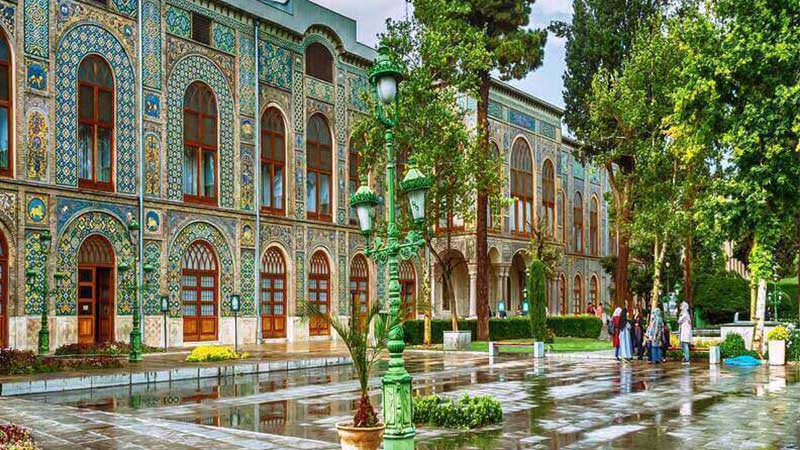
History of Golestan Palace
It is worth noting that the present-day Golestan Palace complex covers an area of approximately 4.5 hectares, a mere fraction of its original expanse. Throughout various historical periods, some mansions and palaces within the complex were demolished to make room for expansions and additional structures.
The oldest part of the Golestan Palace complex is the Marble Throne, dating back to the era of Karim Khan Zand. Below, we’ll delve into each section of the palace, offering insights into their significance and what you can expect during your visit.
Marble Throne (Takht-e Marmar)
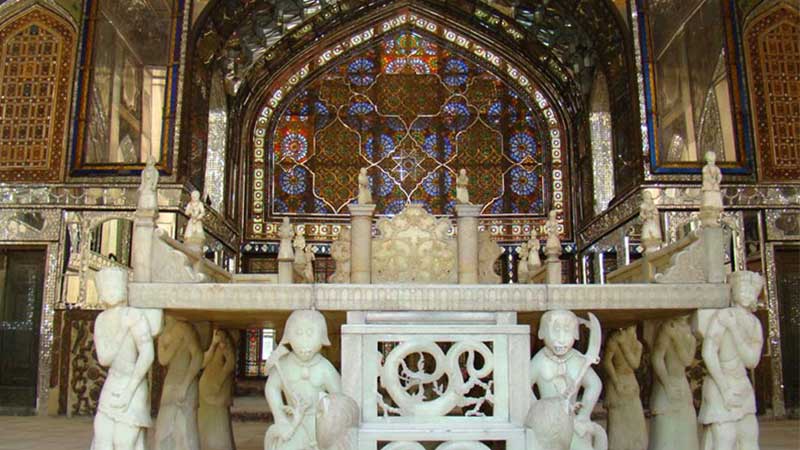
Marble Throne
Your journey begins with the Marble Throne, featuring a balcony adorned with a marble throne and angelic statues. During the Qajar era, this balcony served as the setting for the “greeting ceremony,” during which individuals from diverse backgrounds presented their concerns and requests to the king. Additionally, some kings were crowned on this balcony. The mansion’s opulent decorations and the marble throne itself are truly captivating.
Karim Khani Nook (Khalvat e Karim Khani)
Khalvat e Karim Khani, depicted in Kamalul Molk’s painting, can be explored without the need for a ticket. Historically, Agha Mohammad Khan Qajar, out of animosity towards the Zand dynasty, placed Karim Khan’s remains at the entrance of this section, showing a certain level of disrespect.
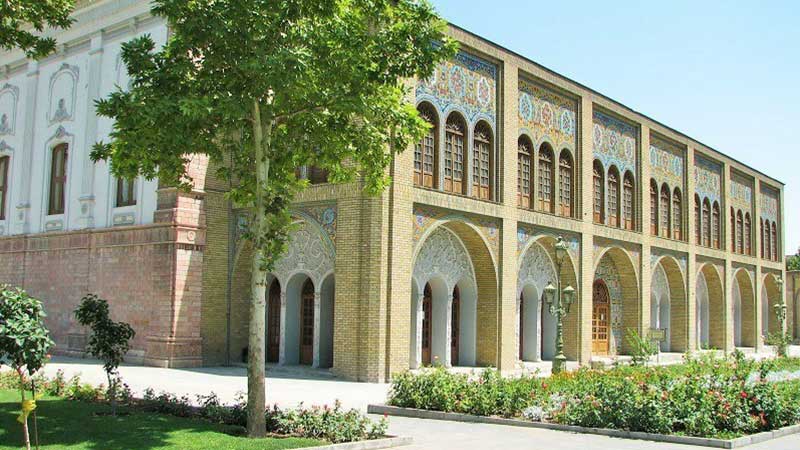
Karim Khani Nook (Khalvat-e Karim Khani)
Currently, the tomb of Nasser ed Din Shah, which is carved into stone, is on display in this area, offering visitors an up-close view.
Museum Hall
Situated between the gallery and the entrance to the exclusive palace, the Museum at Golestan Palace primarily exhibits gifts presented to various kings over the years by rulers and authorities from different countries. Among the items, you can see the Naseri pickaxe, which has its own intriguing history.
Ekhtesasi Palace
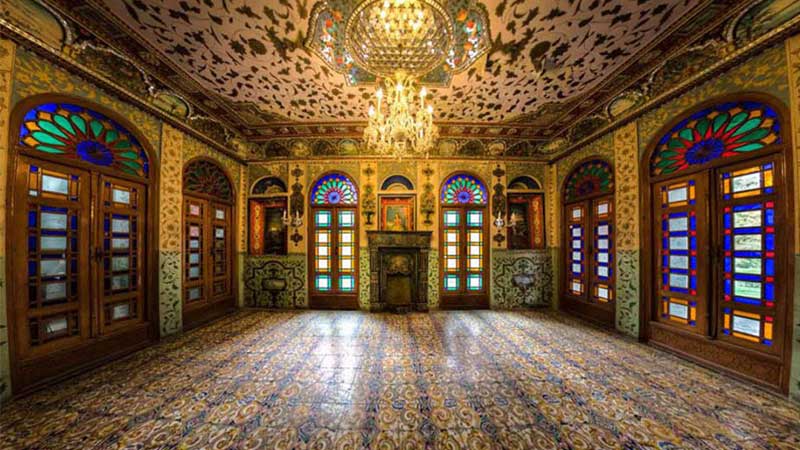
Inside Golestan Palace
The Ekhtesasi (Exclusive) Palace within the Golestan complex comprises several halls (Salam, Mirror, Ivory, Containers, and Diamond), each featuring a diverse array of artworks. These halls showcase various paintings, exquisite pottery, and other decorative pieces, all set against the backdrop of the palace’s stunning architecture.
Salam Hall
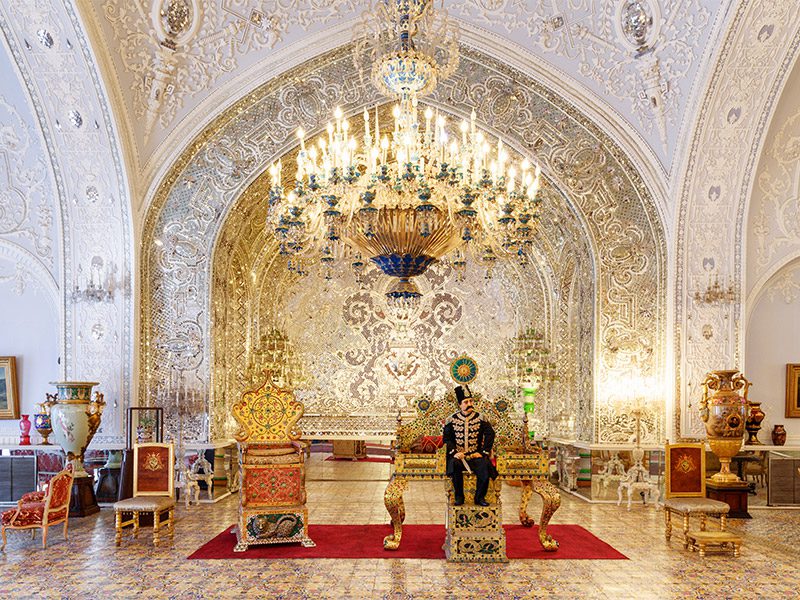
Salam Hall in Tehran Golestan Palace
The Salam Hall, the largest and one of the most significant parts of the palace, was historically used for Salam ceremonies. Today, it displays antique objects throughout, including a replica of Nasser ed Din Shah on the peacock throne and a rare adjacent throne, both of which are replicas.
Mirror Hall
Aside from the Salam Hall, where numerous works are exhibited, the Hall of Mirrors stands out as a remarkable part of the Exclusive Palace. Kamal-ul-Molk adorned this hall with exquisite paintings, capturing intricate details with unparalleled finesse.
Hall of Containers
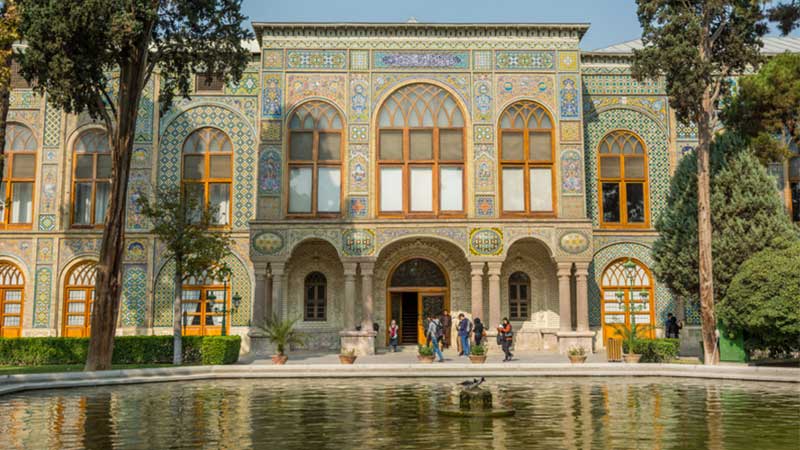
Hall of Containers
Following your exploration of these halls, you’ll encounter the Hall of Containers, where an impressive collection of beautiful chinaware from different countries is on display. Notable among them are chinaware gifted to Iran by Queen Victoria and Napoleon.
Brilliant Hall
Next is the Brilliant Hall, distinguished by its unique stucco decorations and mirror work, sure to leave you awe-inspired.
Hozkhaneh (Pond Mansion)
The Golestan Palace Museum’s pond area is similar in content to the gallery, with a key difference being the paintings, most of which were created by non-Iranian artists and donated by European monarchs to Iranian kings. The pool’s architectural style and interior design reflect European influences.
Shams Ol-Emareh Mansion
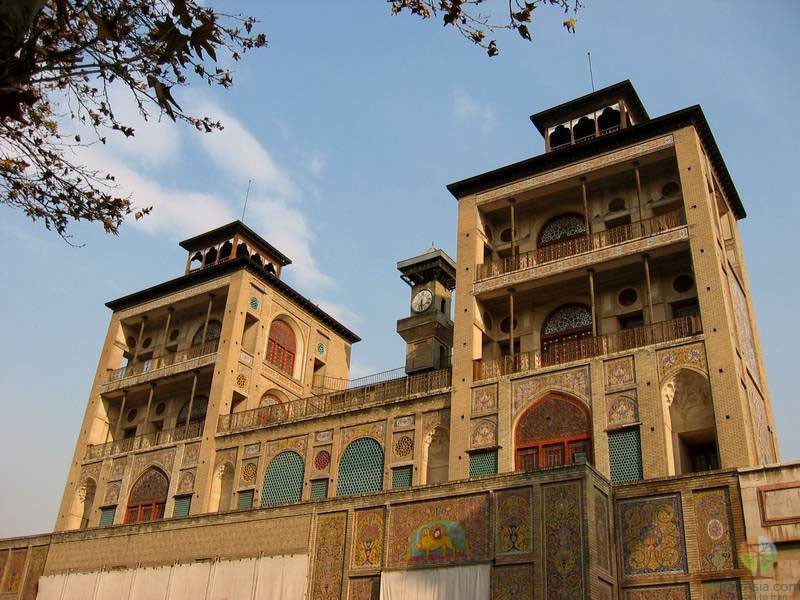
Shams Ol-Emareh Mansion
Shams Ol-Emareh of Golestan Palace, once emblematic of old Tehran, stands as one of the most valuable buildings within the complex. This mansion, approximately 35 meters tall, is the city’s first high-rise structure and boasts a metal frame—a pioneering feature in Tehran’s architectural history.
Visitors can explore the first floor of Shams Ol-Emareh, where several distinct rooms await.
Windcatcher Mansion
Following your visit to Shams Ol-Emareh, the Windcatcher Mansion beckons as one of the most captivating sections of the Golestan Palace complex. Its ornate decorations and the presence of a large sash window make it a sight to behold. Access to Windcatcher Mansion requires a ticket.
Photo Gallery
The basement of the Windcatcher Mansion doubles as a photography studio, showcasing historical photos, some of which were captured by Nasser ed Din Shah himself. These photos offer glimpses into the fashion and attire of the Qajar era. Admission to the Photo Gallery Museum also requires a ticket.
Ivory Hall
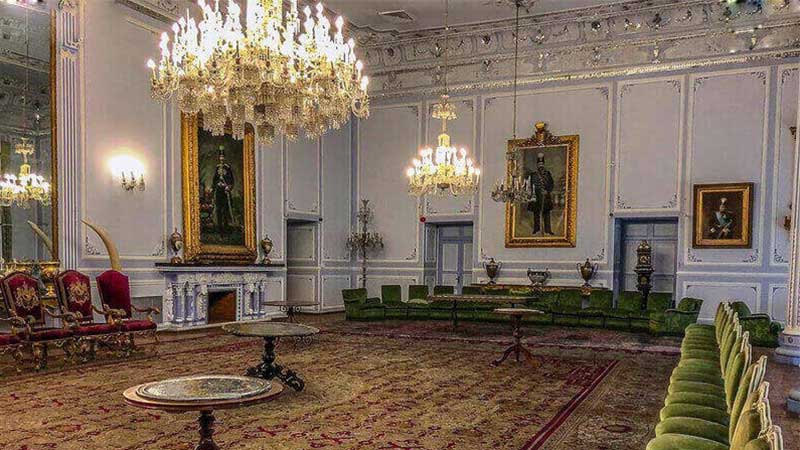
The Ivory Hall
The Ivory Hall, another segment of the Exclusive Palace, boasts captivating works and objects, including large paintings of Qajar kings. It is named after the two ivory sculptures within.
Almas Mansion
Situated on the southern side of the Golestan Palace complex is the Almas (Diamond) Mansion, named for the mirror work embellishing its interior. The intricate window designs in this area are both spectacular and intriguing for tourists.
Museum of Anthropology (Abyaz Palace)
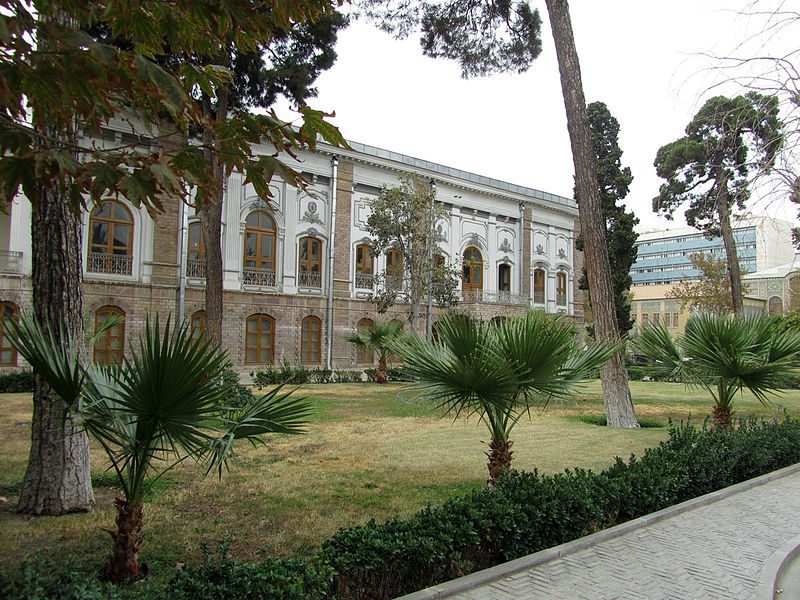
The Abyaz Palace
The Museum of Anthropology, or the Abyaz Palace within the Golestan complex, provides insights into the culture and customs of different regions of Iran, offering valuable information to visitors. This two-story palace displays local attire and depicts the lifestyles of people in the past. The mansion’s exterior features various distinctive sections. Notably, it is Iran’s first unofficial museum.
Address of Golestan Palace
To facilitate your visit to the mansions and palaces of the Golestan complex, we recommend setting aside several hours, or even half a day, if possible, to explore these historical treasures fully. The complex boasts numerous palaces, each with its own unique charm. Additionally, you can gather information about nearby facilities for a more comprehensive visit.
Golestan Palace is located on 15 Khordad Street and Arg Square in Tehran. We suggest using the 15 Khordad metro station for your visit, as Golestan Palace lacks its own parking facilities. Street parking can be congested, except on Fridays. Note that Golestan Palace has two entrances, one from Arg Square and another from the upper entrance on Naser Khosrow Street.
Visiting Hours of Golestan Palace
Spring and Summer: 9:30 AM to 6:30 PM (Ticket sales until 5:30 PM for the first half of the year)
Autumn and Winter: 9:00 AM to 5:00 PM (Ticket sales until 4:00 PM for the second half of the year)
Golestan Palace Holidays
Death of Imam Khomeini (RA): June 14
Martyrdom of Hazrat Ali (AS): 21 Ramadan
Tasuai Hosseini: 9 Muharram
Ashura Hosseini: 10 Muharram
Arbaeen Hosseini: 20 Rabi’ al-Awwal
The death of the Holy Prophet (PBUH) and the martyrdom of Imam Hassan Mojtaba (PBUH): 28 Rabi’ al-Awwal
Martyrdom of Imam Jafar Sadeq (AS): 25 Shawwal
Nature’s Day (13 be dar Festival): 13th of Farvardin
Conclusion
In summary, Golestan Palace stands as evidence to Iran’s rich history and cultural heritage. Its stunning architecture, lush gardens, and intricate design elements provide a glimpse into the luxurious lives of Persian royalty. As a UNESCO World Heritage Site, it not only preserves the past but also invites visitors from around the world to immerse themselves in the majesty and elegance of a forgotten era. Golestan Palace is more than just a historical monument; it is a living proof to the enduring beauty and significance of Iran’s architectural and artistic achievements. A visit to this remarkable palace is a journey back in time, allowing us to appreciate the artistry, culture, and history that continue to shape this fascinating nation.



